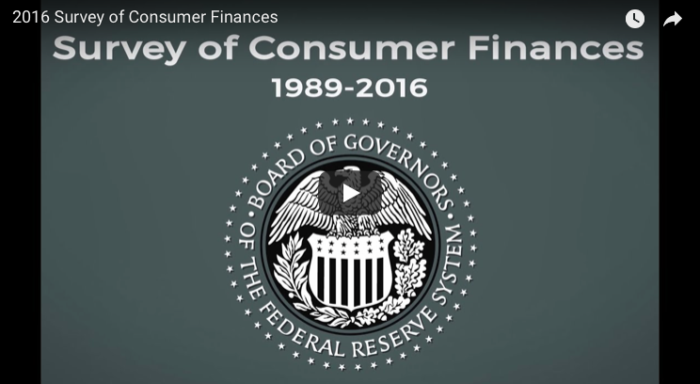Washington, D.C. – The Federal Reserve recently released the Survey of Consumer Finances for 2016. The SCF is a household survey that has been conducted triennially since 1989 in conjunction with a research institution, NORC at the University of Chicago, which surveyed over 6200 households.
The survey is conducted on a three-year cycle. “Throughout that process we work closely with our contractor to develop the questionnaire and to do the field operation where we collect the data,” Kevin Moore, a senior economist who oversees the project, explained. “We get the data here at the Fed, and we process it. And, we produce a public data set for outside users to use also.”
The SCF is the only survey that collects comprehensive information on household finances. “It’s widely used here at the Board by obviously our groups and other divisions,” Moore explained. “We use it to inform the Board about policy decisions. But then it’s also widely used outside the Fed by academic researchers, by public policy think tanks.”
Several news organizations such as the Washington Post, The New York Times, Bloomberg, and CNBC covered various aspects of this year’s survey. “It runs the gauntlet from the focus on inequality numbers to the fact that wealth and income inequality continue to rise over the 2013 to 2016 period,” Moore said about the media coverage of the survey. “But then, a lot of them also focus on the fact that there was a lot of gains in income and wealth across demographic and economic groups.”
The Federal Reserve created a video that was released with the survey results. “This actually wasn’t the first video we did,” Moore recalled. “We did one back in 2013, and it seemed to go over well, and it seemed to communicate the results to people in a way that we hadn’t tried before. And I think that it was born out this time too. I think people are just more used to the visualization of data now.”
The video highlights some of the key findings. The beginning of the video shows that mean and median income was increasing across all households after mixed results over the last couple surveys. Mean and median wealth was also increasing during this most recent survey period. Next, the video focuses on households classified by their education. The 2016 survey shows that there have been some strong gains in families with less than college degrees over the last three years. It also focuses on families categorized by their race or ethnicity and shows that there have been some strong gains across minority groups over the same time period. The final segment of the video notes the continued increase in wealth inequality.
The video and the entire survey report are available on the Federal Reserve’s website.
Video producing, editing, voice over, and writing by Amanda Mosher
